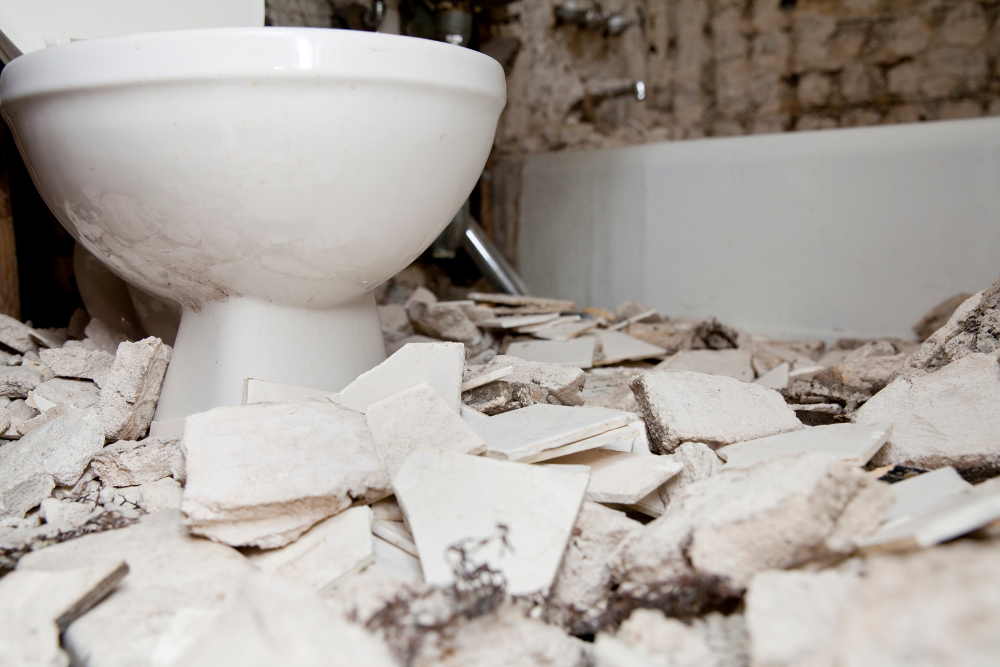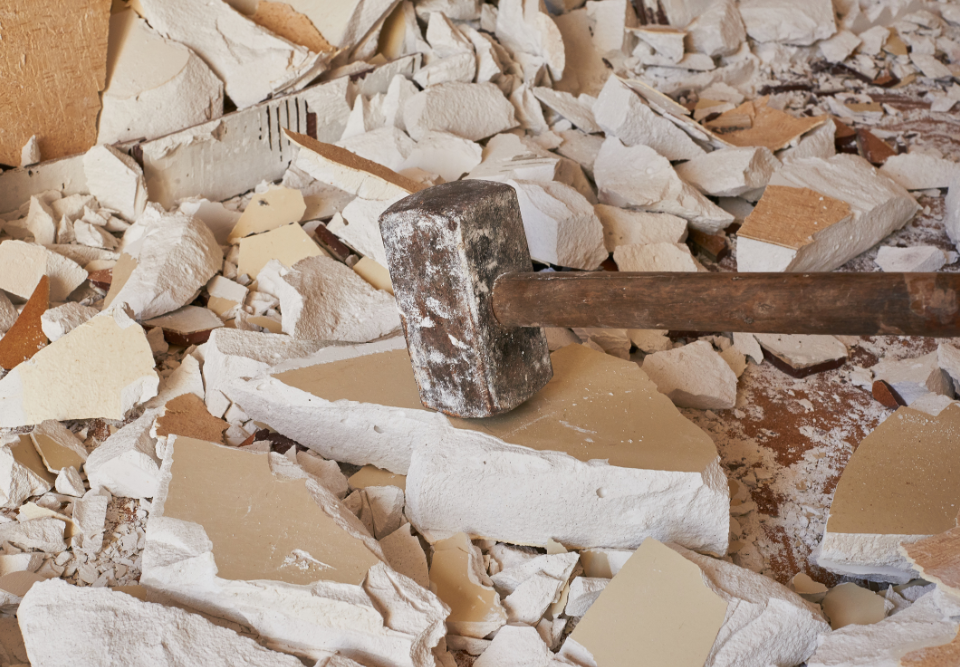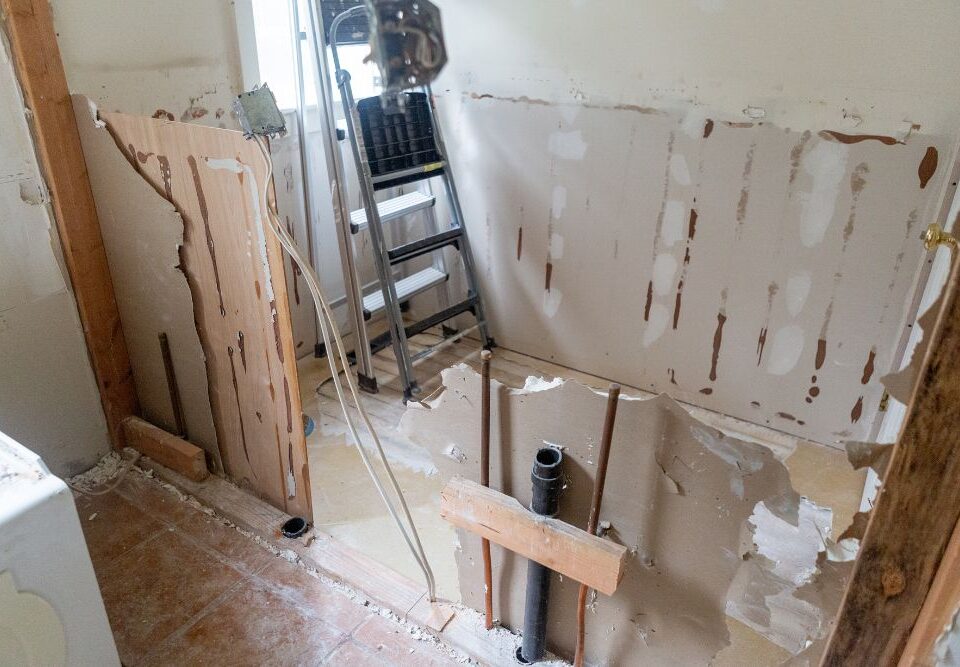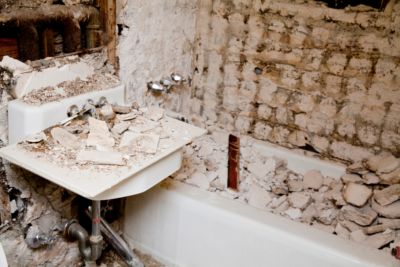
Flooring Removal What to Expect During the Process
September 3, 2025
What Happens to Your Debris After Demolition Cleanup
September 4, 2025Tips for Efficient Bathroom Demolition Cleanup
Prepare the Space for Safe and Smooth Work
Starting a bathroom demolition without proper preparation can lead to chaos and unnecessary delays. First, clear out all personal items, furniture, and fixtures that won’t be removed. This creates an open workspace and reduces the chance of damage to items you plan to keep. Cover floors and any surfaces that will remain intact to protect them from debris and dust. Ensuring good ventilation is essential, so open windows or use fans to keep dust from settling. Safety equipment like gloves, goggles, and sturdy footwear is a must to protect against sharp edges and falling debris. Taking these precautionary steps might feel time-consuming, but it significantly improves the efficiency of the demolition process and minimizes post-work cleanup.
Removing water sources is also crucial before any demolition begins. Turn off the water supply and disconnect pipes to prevent leaks or flooding. Electrical components should be switched off at the breaker box to avoid accidents. Planning the workflow by designating zones for waste and material handling can streamline the process. This organized approach allows you to focus on removing materials systematically rather than reacting to hazards as they arise. Being meticulous during preparation reduces stress and ensures the demolition phase moves quickly and safely.
Sort Debris for Recycling and Disposal
Once demolition begins, the volume of debris can feel overwhelming. Sorting materials as you go can save significant time later and reduce environmental impact. Separate items that can be recycled, such as metals, certain plastics, and tiles, from general construction waste. Wood and drywall can often be recycled or repurposed, so consider creating separate piles for these materials. Keeping these categories distinct prevents confusion and makes disposal more efficient. Avoid leaving mixed piles of debris that require additional sorting after the fact, which can be both frustrating and time-consuming.
Proper disposal also includes hazardous materials like old paint, adhesives, or asbestos-containing tiles. Handling these safely requires adherence to local regulations and sometimes specialized services. Planning for debris removal while sorting ensures you don’t run out of space or leave piles in walkways, which can slow progress and create accidents. Maintaining an organized workflow and managing materials responsibly promotes a safer environment and reduces the total effort needed to restore the space after demolition.

Use the Right Tools for Each Task
Efficiency in bathroom demolition relies heavily on having the appropriate tools. A combination of sledgehammers, pry bars, utility knives, and screwdrivers is essential for safely dismantling fixtures and tiles. For stubborn materials, reciprocating saws or oscillating multi-tools can save hours compared to manual methods. Using the right tool not only speeds up the process but also minimizes the risk of injury. Avoid improvising with makeshift tools, as this can lead to accidents and damage surfaces that could have been preserved. Investing in quality, well-maintained tools pays off in both safety and productivity.
Smaller hand tools are invaluable for detail work, like removing cabinetry or loosening screws in tight spaces. Power tools should be used with caution and proper training to prevent accidents and material damage. Organizing tools in advance and keeping them within easy reach ensures continuous workflow without unnecessary interruptions. Regularly inspecting and maintaining tools ensures they function efficiently throughout the demolition, making each step of the process faster, safer, and less frustrating.
Remove Fixtures Carefully
Bathroom fixtures such as sinks, toilets, and bathtubs often contain plumbing connections and delicate materials. Removing them with care reduces the risk of damaging surrounding structures. Start by draining water lines, disconnecting pipes, and loosening fixtures from their mounts. If possible, remove large pieces intact to simplify cleanup and disposal. Avoid using excessive force, which can create additional debris and hazards. Carefully dismantling these fixtures contributes to a safer environment and more manageable waste for removal.
Some fixtures can be recycled or donated if still in good condition. Keeping these options in mind can reduce landfill waste and even provide financial returns. Documenting the removal process and taking note of which fixtures may need repairs or special disposal ensures nothing is overlooked. Systematic removal of each fixture allows the demolition to progress steadily without creating bottlenecks or increasing cleanup difficulty.
Control Dust and Airborne Debris
Bathroom demolition generates a significant amount of dust, which can pose health risks and create additional cleanup challenges. Using plastic sheeting to seal off doors and vents helps prevent dust from spreading to other areas of the home. Wetting surfaces lightly can reduce dust during tile removal or wall demolition. Air purifiers or fans with HEPA filters improve air quality, keeping the workspace safer and more comfortable. Controlling dust from the outset prevents it from settling on surfaces, which can complicate later cleaning efforts.
Workers should always wear masks and protective clothing to minimize inhalation of fine particles. Regularly removing dust from surfaces during demolition also reduces slipping hazards and keeps the project moving smoothly. By integrating dust management into the workflow, cleanup becomes quicker and more efficient, and the overall demolition process remains safer for everyone involved.
Dispose of Materials Responsibly
Efficient demolition includes planning how debris will be removed from the site. Rent a dumpster or coordinate with a local junk removal service to keep materials organized and off the floor. This prevents clutter from slowing down progress and reduces the risk of accidents. Keeping pathways clear ensures workers can move freely and reduces stress during removal. Proper disposal practices also help the environment by directing recyclable materials to the appropriate facilities instead of landfills.
Tracking the types of materials being disposed of helps maintain compliance with local disposal regulations. Separating hazardous items from general debris ensures safety and legality, while also streamlining the pickup process. Consistently moving materials to disposal points prevents accumulation, making cleanup faster at the end of the demolition. Responsible disposal creates a more organized worksite, which contributes to both efficiency and safety.
Schedule Work in Phases
Breaking demolition into manageable phases keeps the project organized and prevents overwhelm. Start with removing fixtures and smaller components before tackling walls, tiles, or flooring. Sequencing tasks allows for more predictable workflow and helps maintain control over debris and dust. This approach also ensures that important structural elements are not accidentally damaged, preserving the integrity of the space. Phased scheduling can dramatically reduce cleanup time because materials are removed systematically rather than all at once.
Phased work also facilitates better time management for labor and equipment usage. By setting realistic goals for each phase, workers can maintain focus and efficiency without rushing. Monitoring progress and adjusting the schedule based on actual conditions ensures smoother operations and avoids unexpected delays. This methodical approach allows both small and large demolition projects to proceed with less stress and greater productivity.
Keep Safety as a Priority
Safety should never be an afterthought during demolition. Wearing personal protective equipment, maintaining clear pathways, and adhering to safety protocols prevents accidents and injuries. Check for hidden electrical wires, plumbing lines, or structural weaknesses before removing any walls or flooring. Taking the time to assess risks and prepare for them reduces the likelihood of injuries, ensuring that the project continues without interruption.
Regular breaks and proper hydration also contribute to a safer work environment, as fatigue often leads to mistakes. Communicating hazards with everyone involved keeps the team alert and aware of potential risks. Maintaining a strong safety focus not only protects workers but also makes cleanup easier since fewer accidents create less unexpected debris and disruption.
Optimize Cleanup Techniques
Using efficient cleanup techniques can save hours after demolition is complete. Collecting debris in stages, rather than waiting until the end, prevents buildup and keeps the workspace manageable. Use wheeled carts, bins, or buckets to transport materials to disposal areas quickly. Sweeping and vacuuming as you progress minimizes dust accumulation and makes the final cleanup more straightforward. Efficient cleanup methods reduce overall project time and allow spaces to be restored to a usable state sooner.
Organizing tools and disposal containers for easy access speeds up the removal process and ensures nothing is forgotten. Continuous evaluation of cleanup efficiency and adjusting methods where necessary improves workflow and reduces labor effort. By adopting smart cleanup strategies, the demolition process becomes less taxing, leaving a clean and safe environment ready for the next phase of renovation or remodeling.
Maintain Communication and Coordination
Successful bathroom demolition relies on clear communication among everyone involved. Coordinating schedules, assigning tasks, and keeping everyone informed of progress prevents misunderstandings that could slow the project. Regular check-ins ensure that all team members are aware of hazards, debris locations, and task priorities. Effective communication also allows for quick adjustments if unforeseen issues arise, maintaining efficiency and safety throughout the demolition.
Documenting progress with photos or notes can also help track what has been removed and what remains. Clear communication minimizes confusion and ensures that each step of the project aligns with the overall plan. Teams that maintain strong coordination experience fewer setbacks and a smoother cleanup process, reducing time and stress while maximizing productivity.
Conclusion
Efficient bathroom demolition requires careful planning, the right tools, and a consistent focus on safety and organization. Preparing the workspace, sorting debris, and removing fixtures methodically ensures the project progresses smoothly while minimizing hazards. Dust control, responsible disposal, and phased work help maintain a safe environment and streamline the cleanup process. Keeping communication open and optimizing cleanup techniques allows every step to move efficiently, preventing delays and reducing overall effort. By integrating these strategies, bathroom demolition can be a manageable, even satisfying process that clears the way for a refreshed and functional space.
For those in need of professional support, North Bay Junk Removal in Santa Rosa, CA provides expert junk removal services that handle debris safely and efficiently. Their team offers reliable, licensed, and insured services for all types of demolition and renovation cleanup. Homeowners can trust them to manage disposal responsibly and maintain a clean worksite throughout the project. To schedule services or inquire about junk removal, call 707-478-6817 and experience a streamlined cleanup that saves time and effort.




